Reusing Jet Grouting Waste as Filler for Road Asphalt Mixtures of Base Layers
Abstract
1. Introduction
2. Materials and Methods
2.1. Limestone Aggregates
2.2. Marginal Materials
2.2.1. Jet Grouting Waste
2.2.2. Reclaimed Asphalt Pavement
2.2.3. Leaching Test
2.3. Binders
2.4. Mix Design
2.4.1. Grading Curve
2.4.2. Binder Optimization
2.4.3. Asphalt Mastic Preparation
2.5. Methods
2.5.1. Asphalt Mastics
2.5.2. Asphalt Mixtures
3. Results
3.1. SEM Characterization
3.2. Properties of Asphalt Mastics
3.3. Asphalt Mixture Performance
3.3.1. ITS Measurements
3.3.2. ITSM
3.3.3. Cumulative Strain
4. Discussion
- is the i-th value assumed by the k-th parameter (G* (at 10, 25, and 40 °C), δ (at 10, 25, and 40 °C), ITSwet, ITSdry, ITSR, ITSM (at 10, 25 and 40 °C), and εn, a total of 13 parameters) for the j-th asphalt solution (mastic or mixture).
- is the minimum value a obtained from all i-th values measured for each k-th parameter related to each j-th asphalt blend.
- is the maximum value a obtained from all i-th values measured for each k-th parameter related to each j-th mastic and mixture.
5. Conclusions
- JGW as a filler helps to increase the ΔR&B temperature between the MHMAJ mastic (f/b ratio of 0.93) and neat 50/70 bitumen, as well as that between the MHMAJ mastic and MHMA mastic (f/b ratio of 1.05). MHMAJ has a lower ΔR&B than the cold mastic solution (MCRAJ), but the stiffening power of the JGW filler makes it possible to reach a higher ΔR&B when compared with traditional hot bituminous mastic made of limestone filler and neat bitumen.
- It was found that the accelerated curing process for 72 h at 40 °C was not satisfactory for evaluating the performance of the cold mastic in terms of G*. It is necessary to cure the mastics for 28 days to attain better performance than the hot mastics prepared with traditional limestone filler and JGW.
- The SEM analysis showed a good homogenous microstructure of the HMAJ and CRAJ solutions when compared with the traditional HMA.
- The curing time analysis of the cold asphalt mixture revealed that the CRAJ, investigated over 28 days, attained the ITS value of HMA before 14 days and matched the highest ITS observed for HMAJ in 20 days.
Author Contributions
Funding
Institutional Review Board Statement
Informed Consent Statement
Data Availability Statement
Conflicts of Interest
References
- Tsalis, T.A.; Malamateniou, K.E.; Koulouriotis, D.; Nikolaou, I.E. New challenges for corporate sustainability reporting: United Nations’ 2030 Agenda for sustainable development and the sustainable development goals. Corp. Soc. Responsib. Environ. Manag. 2020, 27, 1617–1629. [Google Scholar] [CrossRef]
- Veropalumbo, R.; Viscione, N.; Russo, F. Rheological and mechanical properties of HMA containing fly ashes as alternative filler. In Proceedings of the International Symposium on Asphalt Pavement & Environment, Padua, Italy, 11–13 September 2019; Springer: Berlin/Heidelberg, Germany, 2019; pp. 88–97. [Google Scholar] [CrossRef]
- Ossa, A.; García, J.L.; Botero, E. Use of recycled construction and demolition waste (CDW) aggregates: A sustainable alternative for the pavement construction industry. J. Clean. Prod. 2016, 135, 379–386. [Google Scholar] [CrossRef]
- Topini, D.; Toraldo, E.; Andena, L.; Mariani, E. Use of recycled fillers in bituminous mixtures for road pavements. Constr. Build. Mater. 2018, 159, 189–197. [Google Scholar] [CrossRef]
- Aysen Lav, M.; Hilmi Lav, A. Effects of stabilization on resilient characteristics of fly ash as pavement material. Constr. Build. Mater. 2014, 54, 10–16. [Google Scholar] [CrossRef]
- Dyer, P.P.O.L.; de Lima, M.G.; Klinsky, L.M.G.; Silva, S.A.; Coppio, G.J.L. Environmental characterization of foundry waste sand (WFS) in hot mix asphalt (HMA) mixtures. Constr. Build. Mater. 2018, 171, 474–484. [Google Scholar] [CrossRef]
- Simone, A.; Mazzotta, F.; Eskandarsefat, S.; Sangiorgi, C.; Vignali, V.; Lantieri, C.; Dondi, G. Experimental application of waste glass powder filler in recycled dense-graded asphalt mixtures. Road Mater. Pavement Des. 2019, 20, 592–607. [Google Scholar] [CrossRef]
- Skaf, M.; Pasquini, E.; Revilla-Cuesta, V.; Ortega-López, V. Performance and durability of porous asphalt mixtures manufactured exclusively with electric steel slags. Materials 2019, 12, 3306. [Google Scholar] [CrossRef] [PubMed]
- Dimter, S.; Šimun, M.; Zagvozda, M.; Rukavina, T. Laboratory evaluation of the properties of asphalt mixture with wood ash filler. Materials 2021, 14, 575. [Google Scholar] [CrossRef]
- Sargın, Ş.; Saltan, M.; Morova, N.; Serin, S.; Terzi, S. Evaluation of rice husk ash as filler in hot mix asphalt concrete. Constr. Build. Mater. 2013, 48, 390–397. [Google Scholar] [CrossRef]
- Konieczna, K.; Pokorski, P.; Sorociak, W.; Radziszewski, P.; Żymełka, D.; Król, J.B. Study of the stiffness of the bitumen emulsion based cold recycling mixes for road base courses. Materials 2020, 13, 5473. [Google Scholar] [CrossRef]
- Ziari, H.; Aliha, M.R.M.; Moniri, A.; Saghafi, Y. Crack resistance of hot mix asphalt containing different percentages of reclaimed asphalt pavement and glass fiber. Constr. Build. Mater. 2020, 230, 117015. [Google Scholar] [CrossRef]
- Ingrassia, L.P.; Lu, X.; Ferrotti, G.; Conti, C.; Canestrari, F. Investigating the “circular propensity” of road bio-binders: Effectiveness in hot recycling of reclaimed asphalt and recyclability potential. J. Clean. Prod. 2020, 255, 120193. [Google Scholar] [CrossRef]
- Meroni, F.; Flintsch, G.W.; Diefenderfer, B.K.; Diefenderfer, S.D. Application of balanced mix design methodology to optimize surface mixes with high-RAP content. Materials 2020, 13, 5638. [Google Scholar] [CrossRef]
- Riviera, P.P.; Dalmazzo, D.; Santagata, E. Laboratory tests for the characterization of cold asphalt patching mixtures. In Proceedings of the 9th International Conference on Maintenance and Rehabilitation of Pavements—Mairepav9 2020, Zurich, Switzerland, 1–3 July 2020; Springer: Berlin/Heidelberg, Germany, 2020; pp. 67–77. [Google Scholar] [CrossRef]
- Pasetto, M.; Baldo, N. Cold recycling with bitumen emulsion of marginal aggregates for road pavements. In Proceedings of the International Symposium on Asphalt Pavement & Environment 2019, Padua, Italy, 11–13 September 2019; Springer: Berlin/Heidelberg, Germany, 2019; pp. 155–163. [Google Scholar] [CrossRef]
- Wang, Y.; Leng, Z.; Li, X.; Hu, C. Cold recycling of reclaimed asphalt pavement towards improved engineering performance. J. Clean. Prod. 2018, 171, 1031–1038. [Google Scholar] [CrossRef]
- Doyle, T.A.; McNally, C.; Gibney, A.; Tabaković, A. Developing maturity methods for the assessment of cold-mix bituminous materials. Constr. Build. Mater. 2013, 38, 524–529. [Google Scholar] [CrossRef]
- Ferrotti, G.; Grilli, A.; Mignini, C.; Graziani, A. Comparing the field and laboratory curing behaviour of cold re-cycled asphalt mixtures for binder courses. Materials 2020, 13, 4697. [Google Scholar] [CrossRef]
- Güllü, H. A novel approach to prediction of rheological characteristics of jet grout cement mixtures via genetic expression programming. Neural. Comput. Appl. 2017, 28, 407–420. [Google Scholar] [CrossRef]
- Güllü, H. A new prediction method for the rheological behavior of grout with bottom ash for jet grouting columns. Soils Found. 2017, 57, 384–396. [Google Scholar] [CrossRef]
- Stimilli, A.; Ferrotti, G.; Graziani, A.; Canestrari, F. Performance evaluation of a cold-recycled mixture containing high percentage of reclaimed asphalt. Road Mater. Pavement Des. 2013, 14, 149–161. [Google Scholar] [CrossRef]
- Kuchiishi, A.K.; Vasconcelos, K.; Bariani Bernucci, L.L. Effect of mixture composition on the mechanical behaviour of cold recycled asphalt mixtures. Int. J. Pavement Eng. 2019, 1–11. [Google Scholar] [CrossRef]
- Sangiorgi, C.; Tataranni, P.; Simone, A.; Vignali, V.; Lantieri, C.; Dondi, G. A laboratory and filed evaluation of Cold Recycled Mixture for base layer entirely made with Reclaimed Asphalt Pavement. Constr. Build. Mater. 2017, 138, 232–239. [Google Scholar] [CrossRef]
- Al Nageim, H.; Al-Busaltan, S.F.; Atherton, W.; Sharples, G. A comparative study for improving the mechanical properties of cold bituminous emulsion mixtures with cement and waste materials. Constr. Build. Mater. 2012, 36, 743–748. [Google Scholar] [CrossRef]
- Veropalumbo, R.; Russo, F.; Viscione, N.; Biancardo, S.A. Rheological properties comparing hot and cold bituminous mastics containing jet grouting waste. Adv. Mater. Sci. Eng. 2020. [Google Scholar] [CrossRef]
- Veropalumbo, R.; Russo, F.; Viscione, N.; Biancardo, S.A.; Oreto, C. Investigating the rheological properties of hot bituminous mastics made up using plastic waste materials as filler. Constr. Build. Mater. 2021, 270, 121394. [Google Scholar] [CrossRef]
- Veropalumbo, R.; Viscione, N.; Russo, F. Indirect tensile strength method for defining a proper practice of asphalt mixtures design. WIT Trans. Eng. Sci. 2019, 124, 255–265, In Proceedings of the 9th International Conference on Computational Methods and Experiments in Material and Contact Characterisation, Lisbon, Portugal, 22–24 May 2019. [Google Scholar]
- Meocci, M.; Grilli, A.; La Torre, F.; Bocci, M. Evaluation of mechanical performance of cement-bitumen-treated materials through laboratory and in-situ testing. Road Mater. Pavement Des. 2017, 18, 376–389. [Google Scholar] [CrossRef]
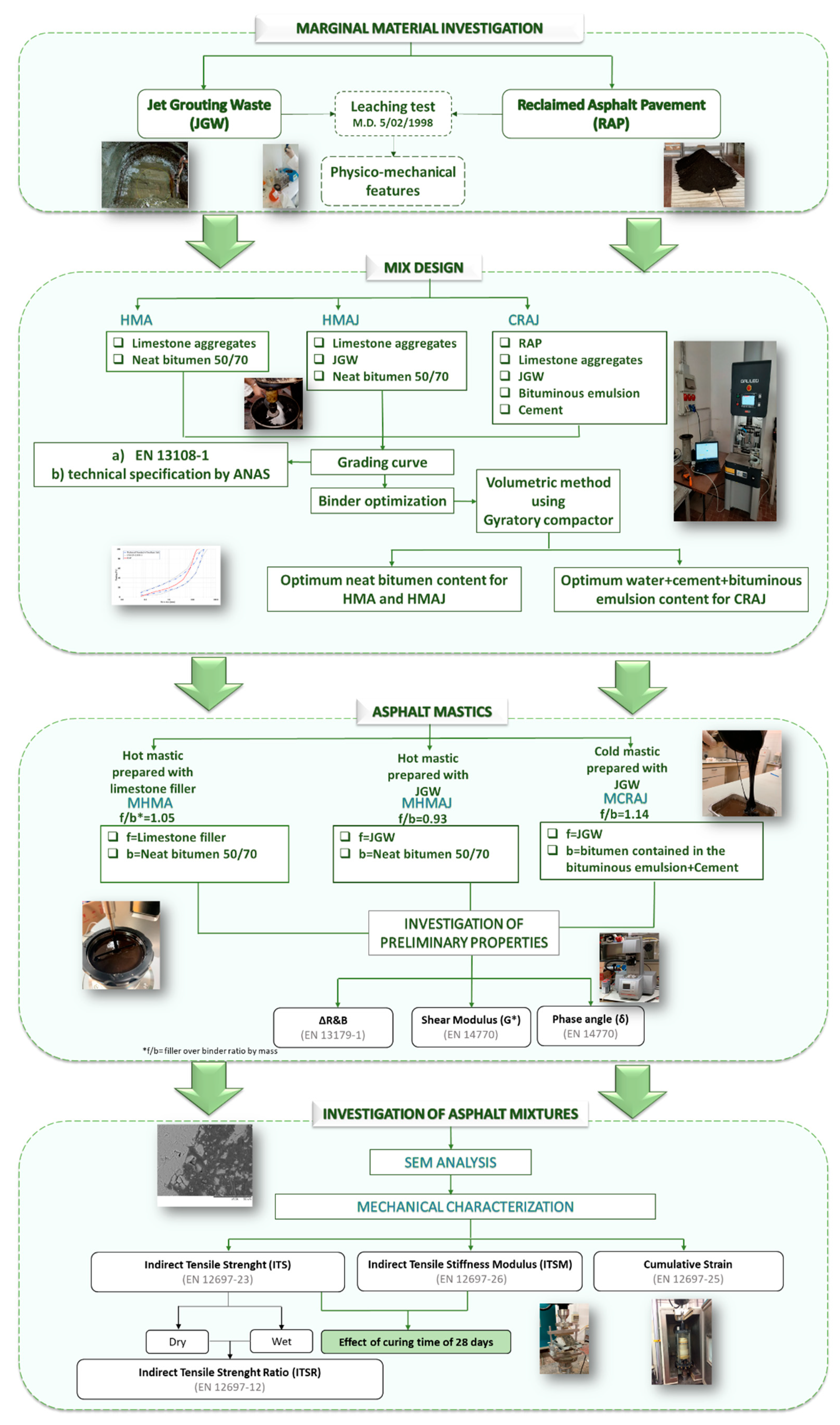


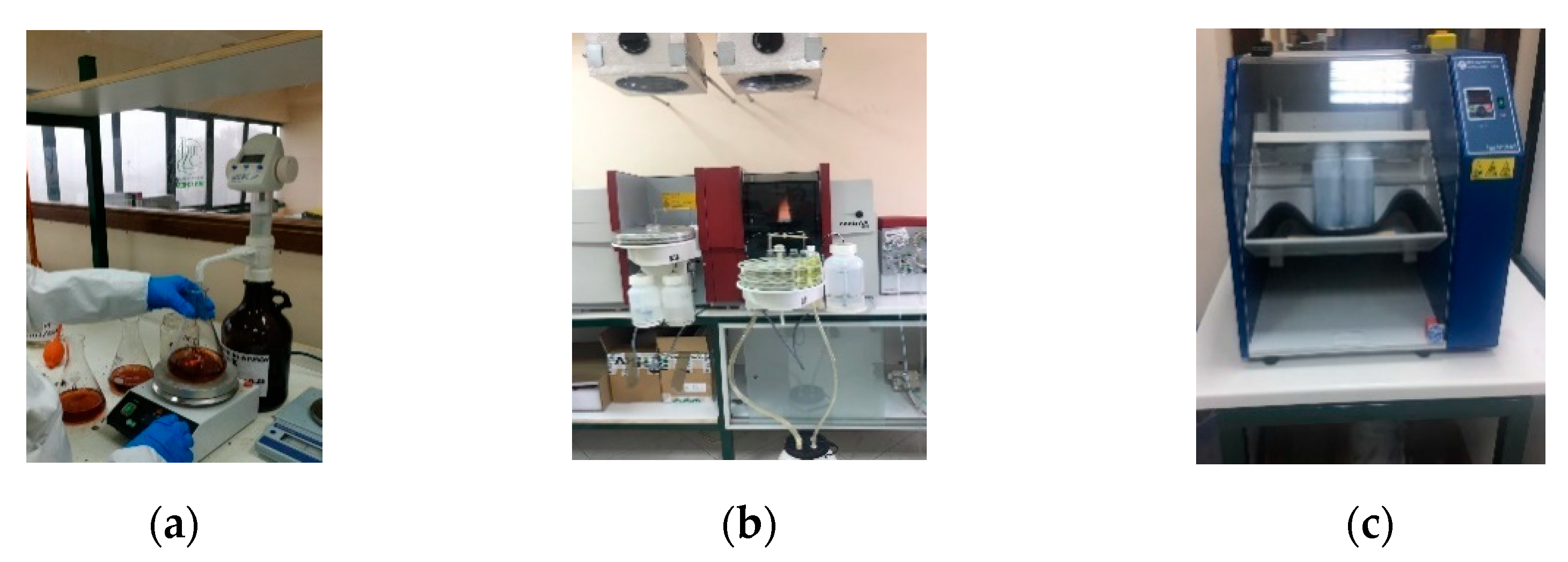

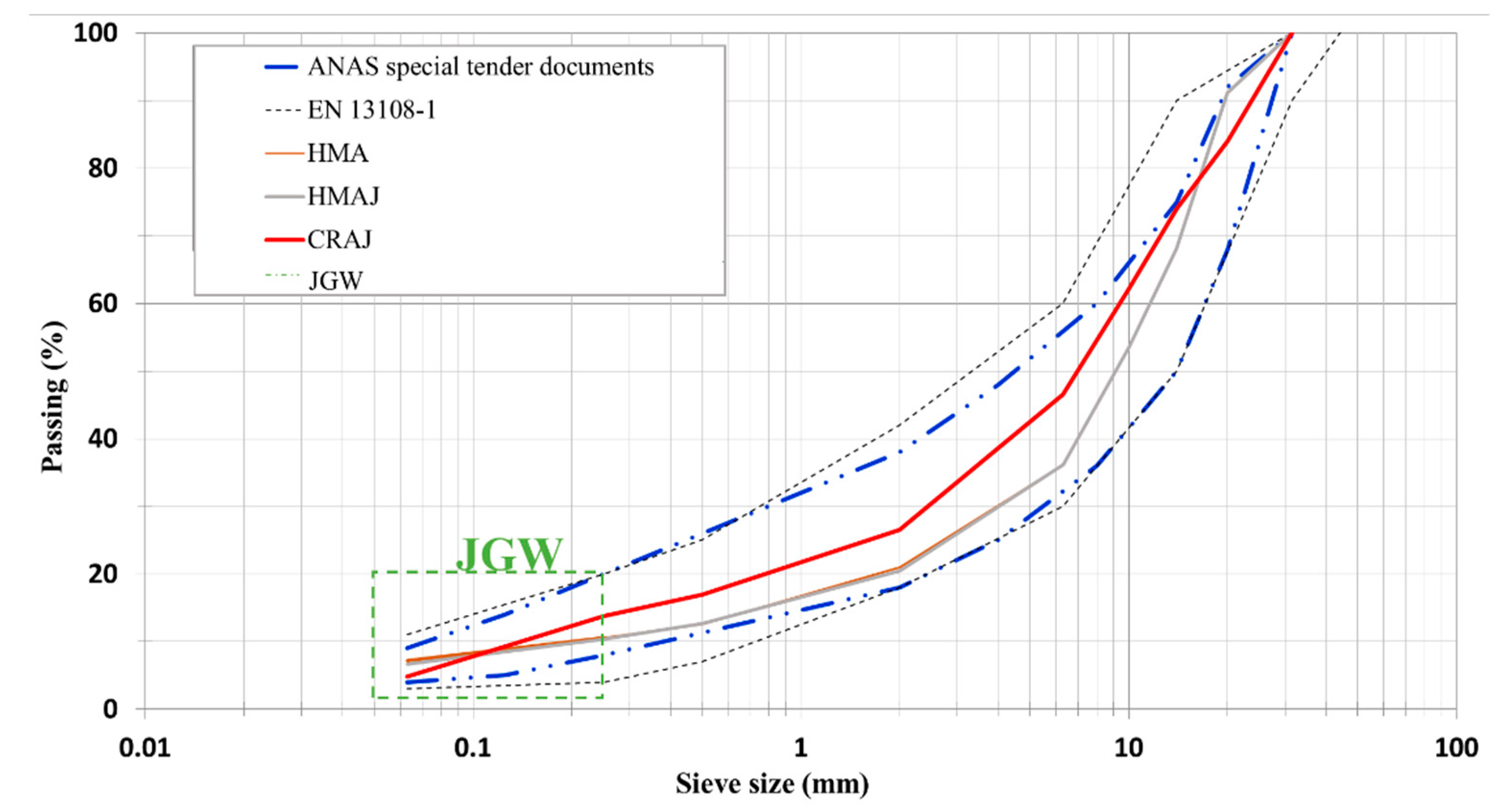
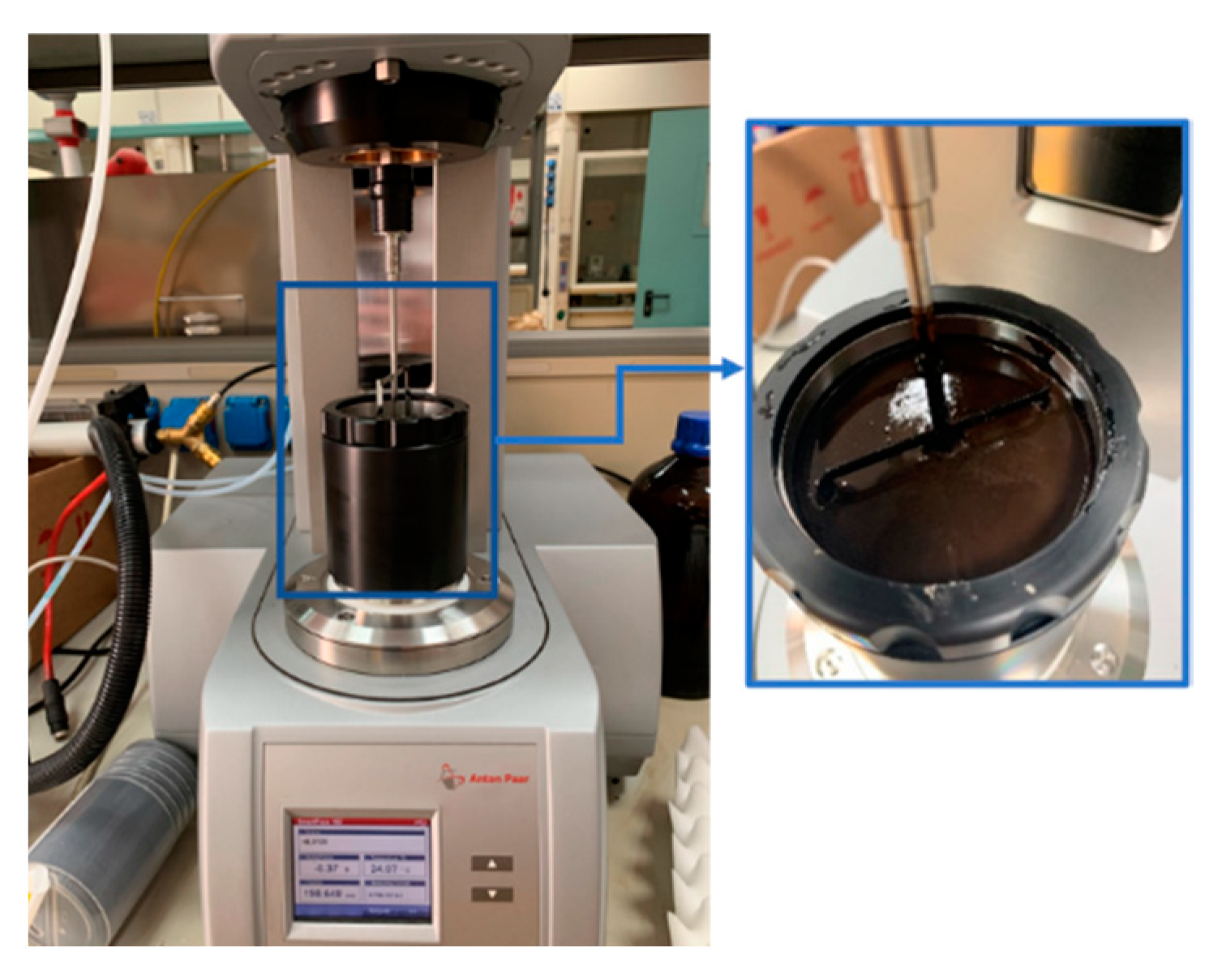
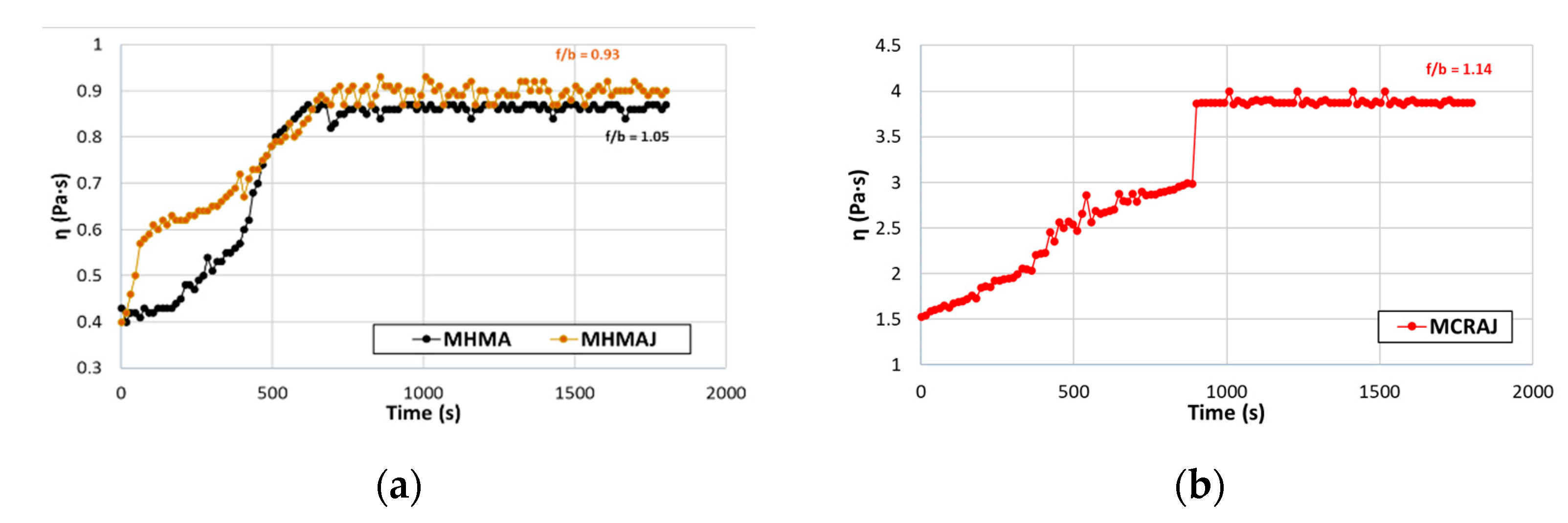

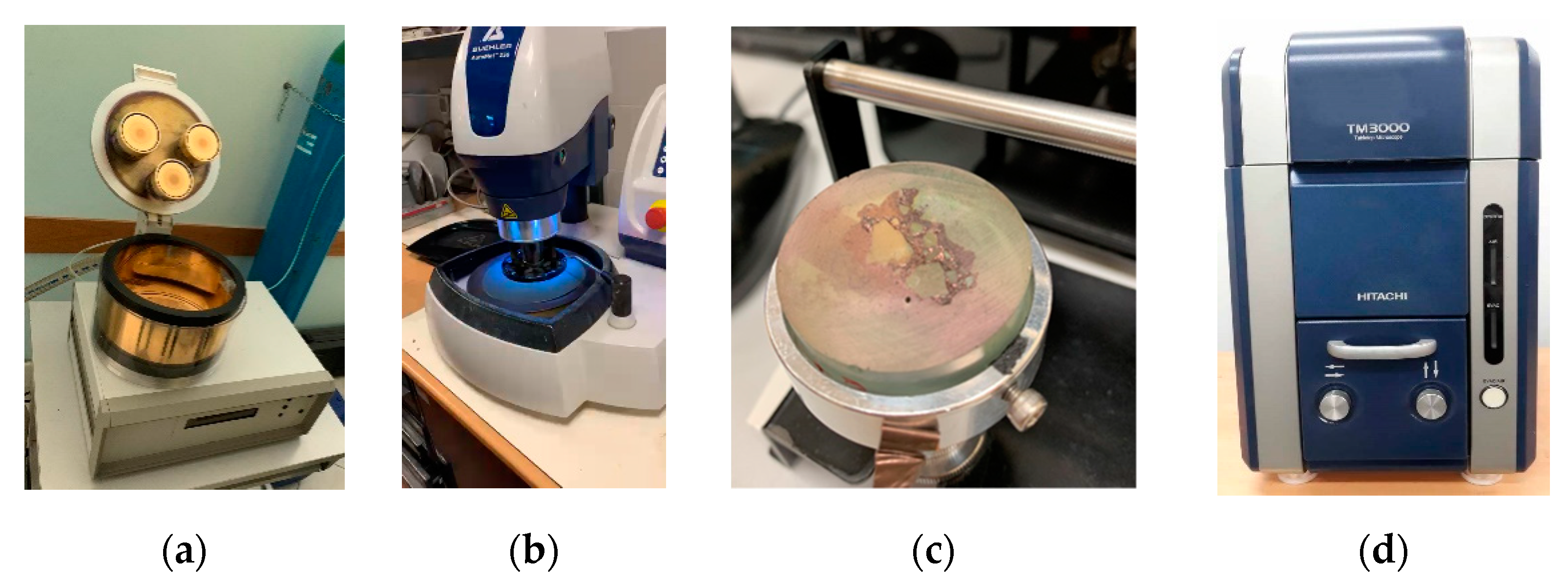

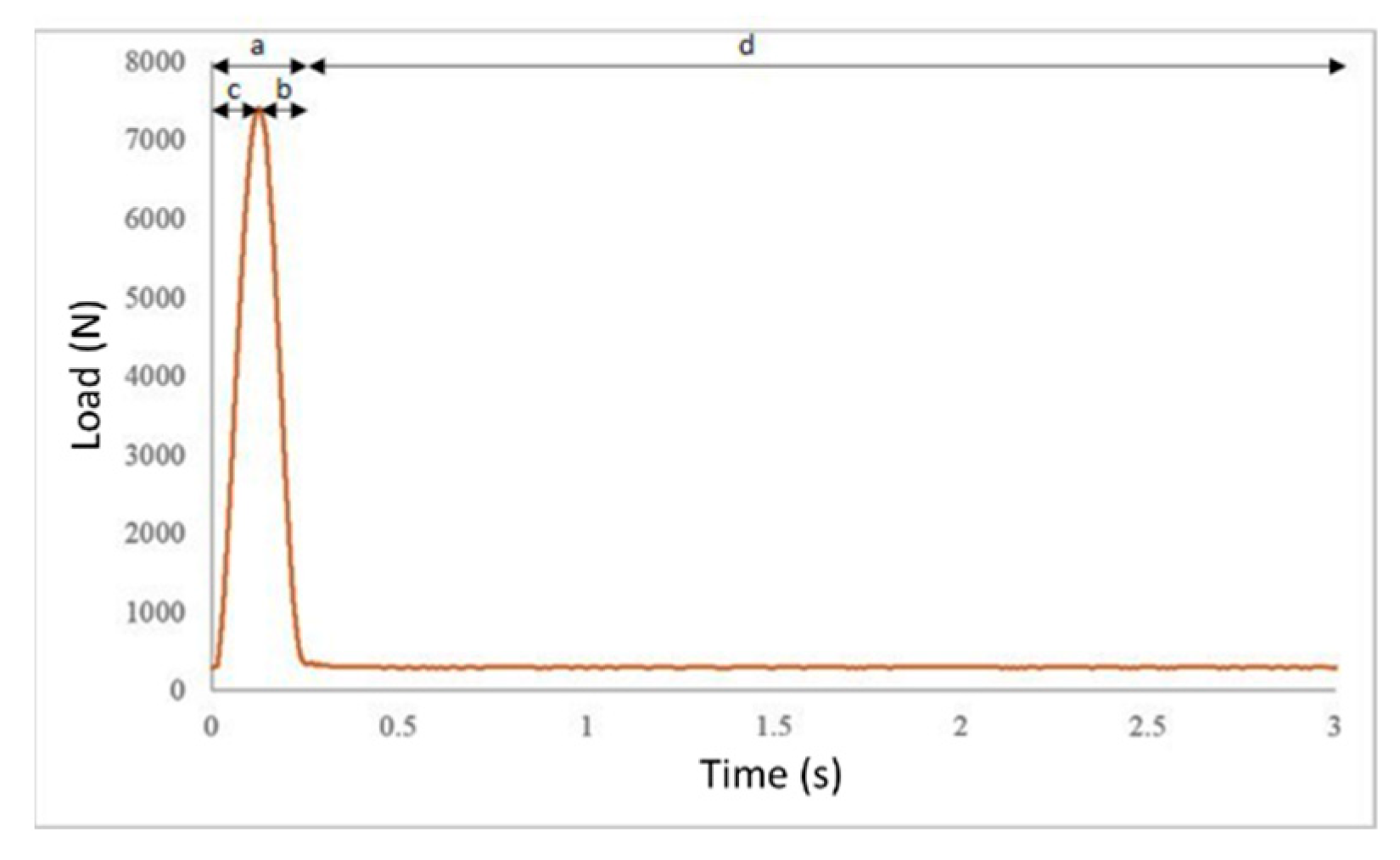

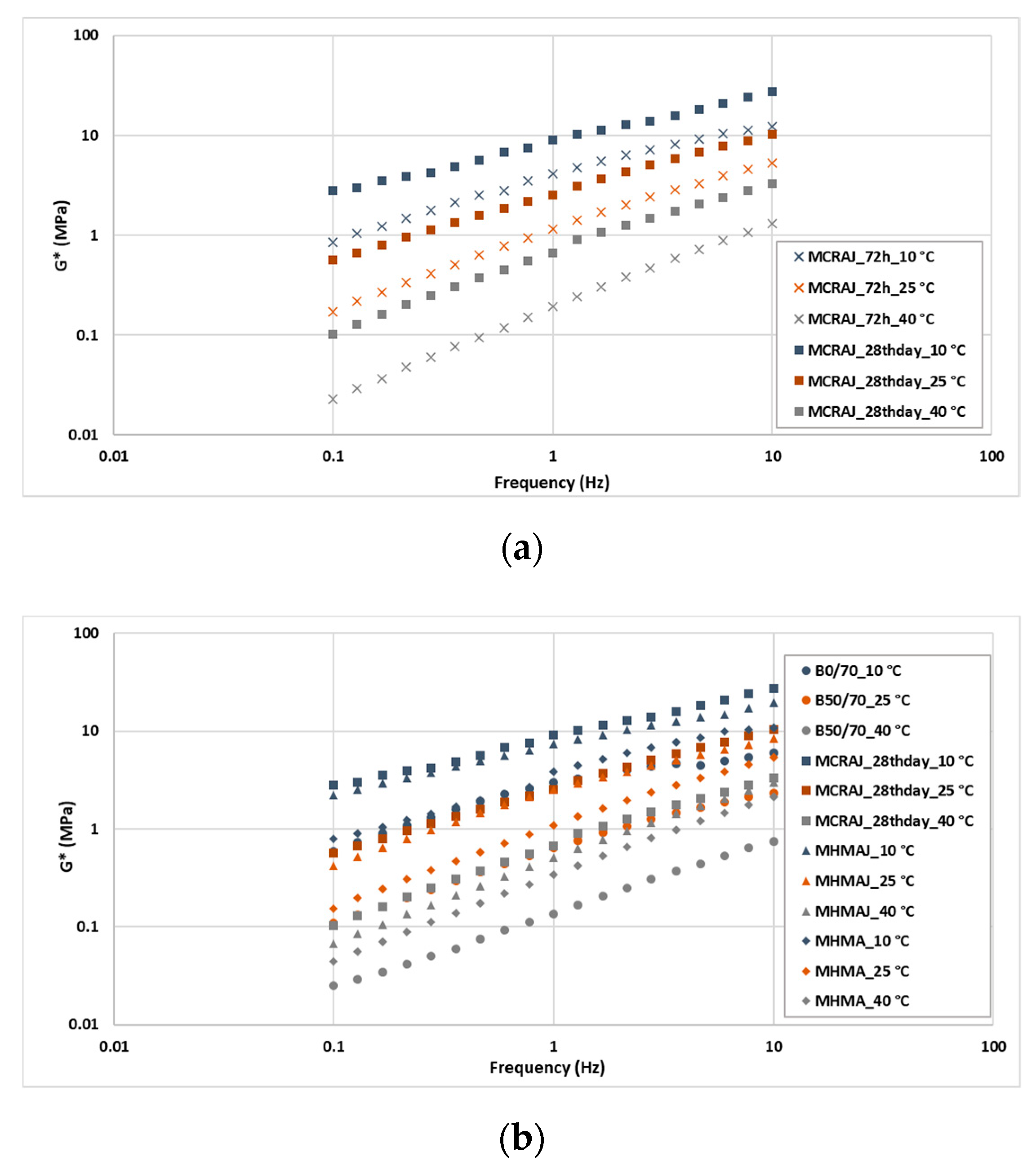
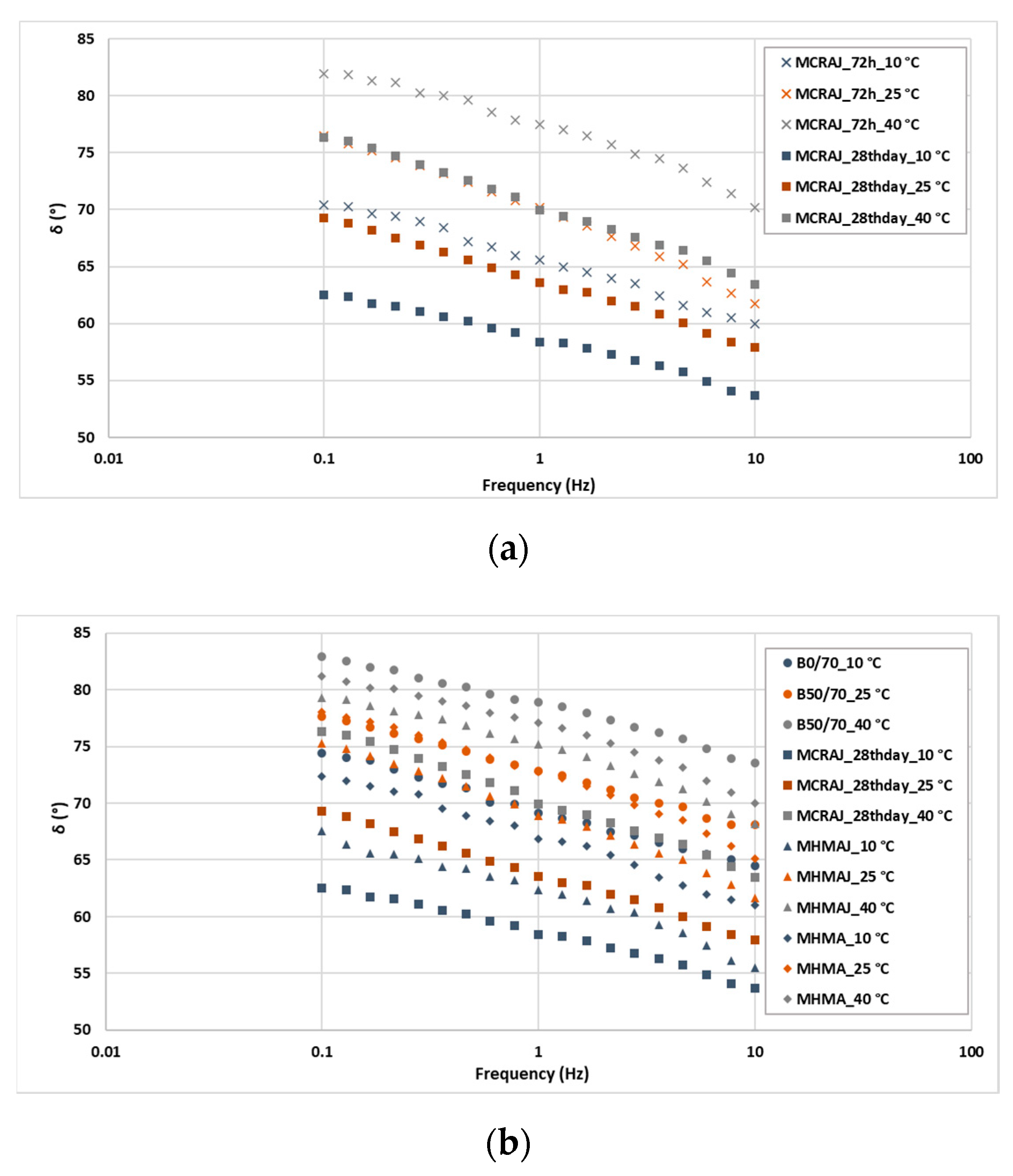
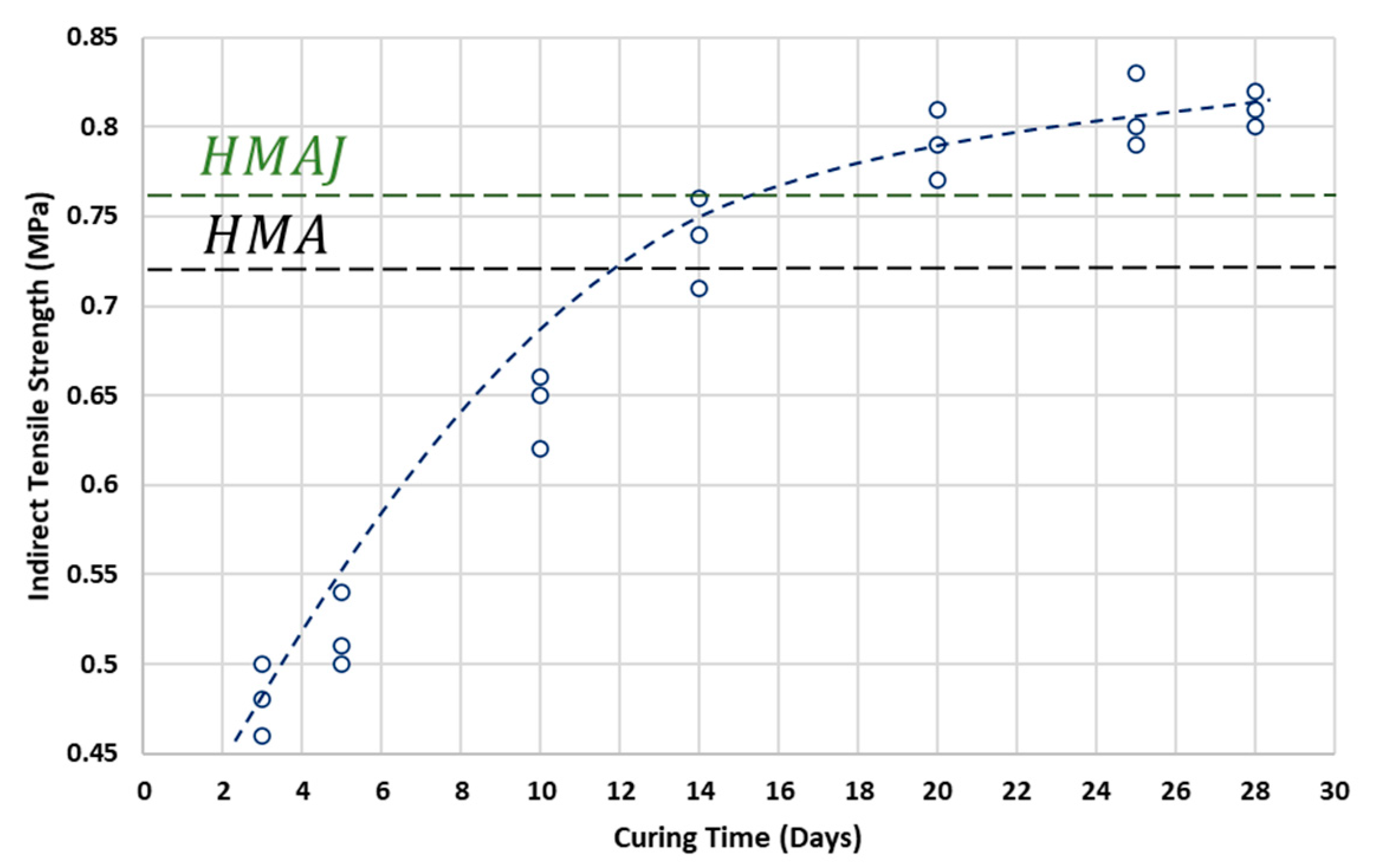
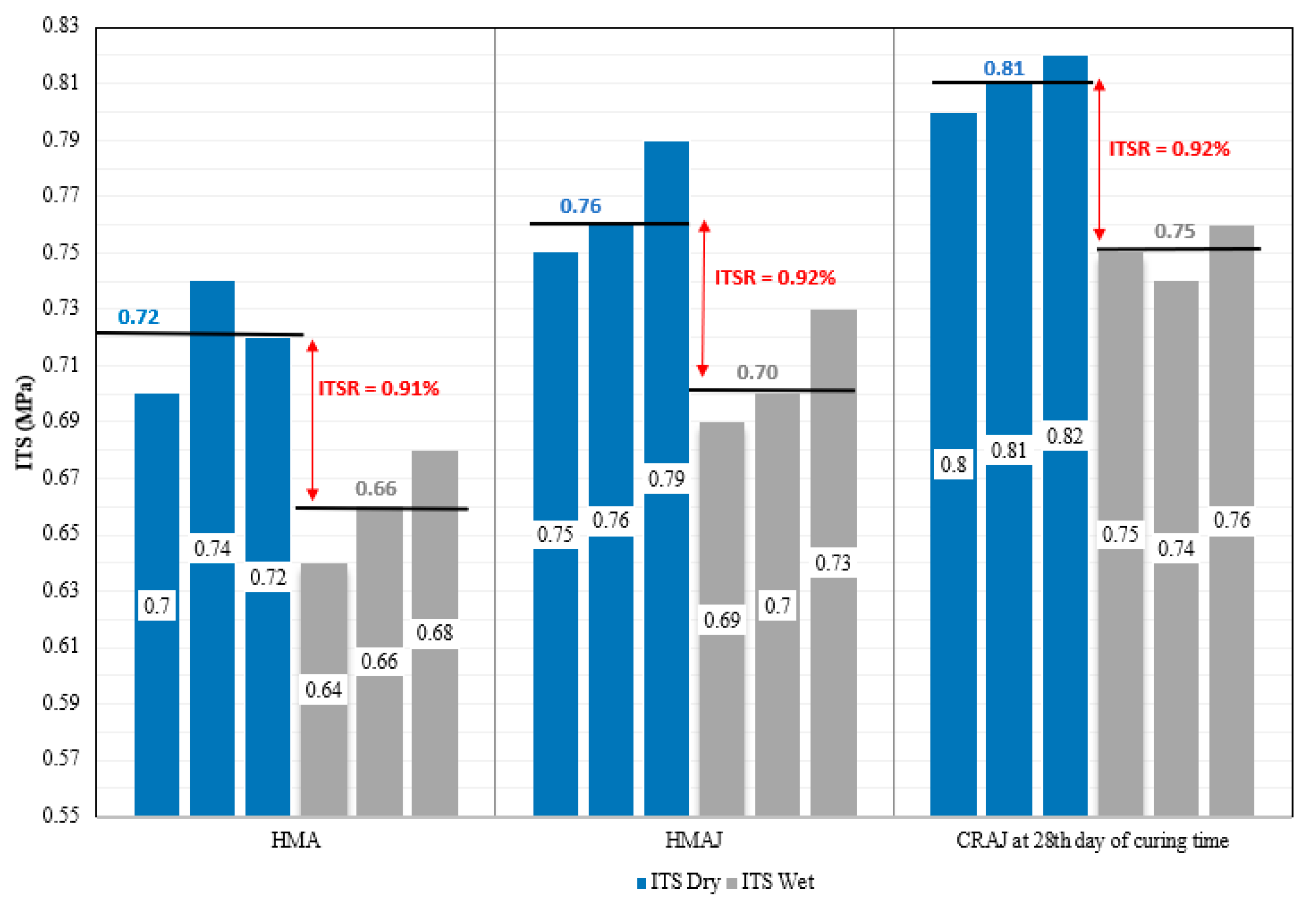
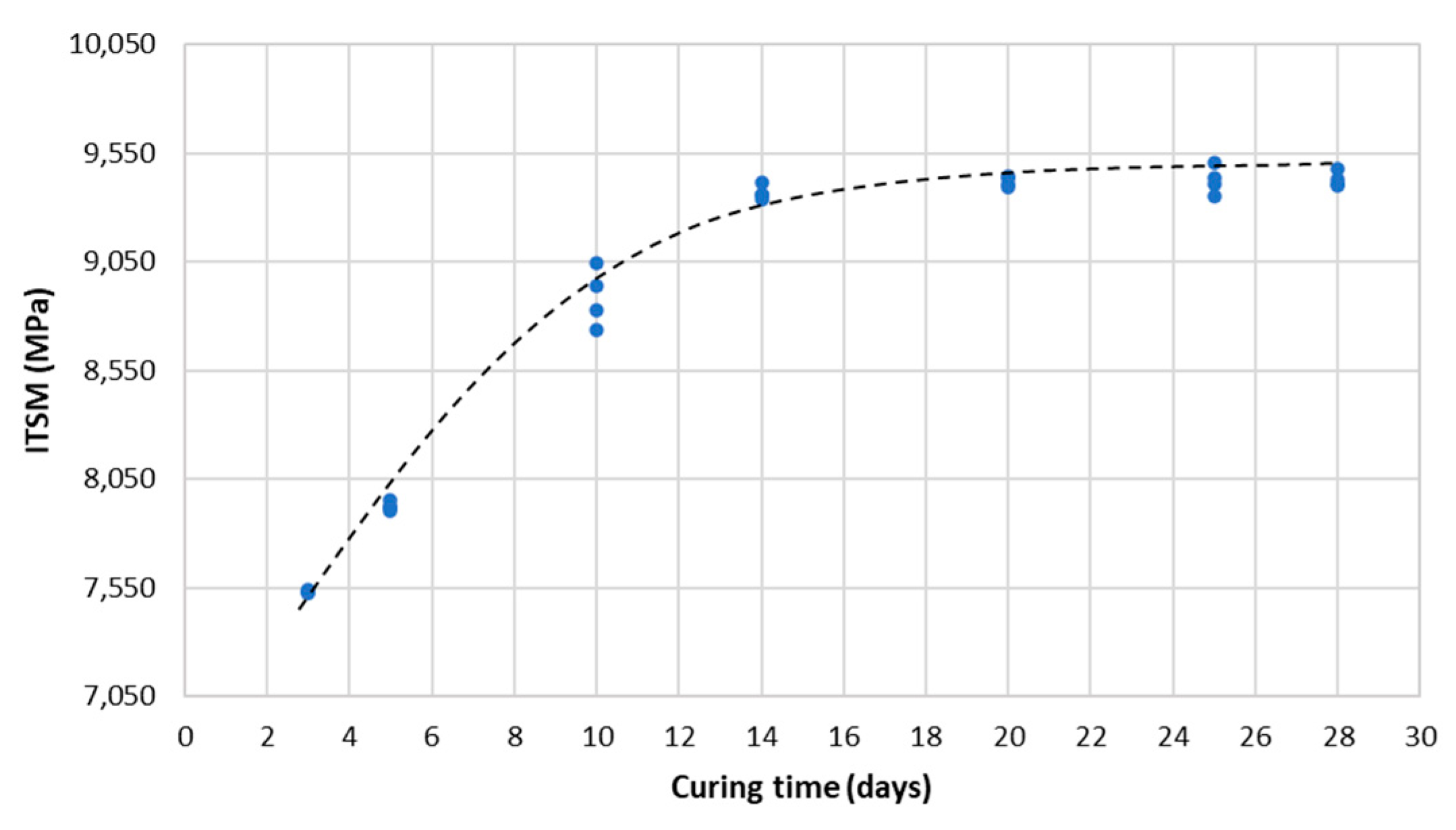
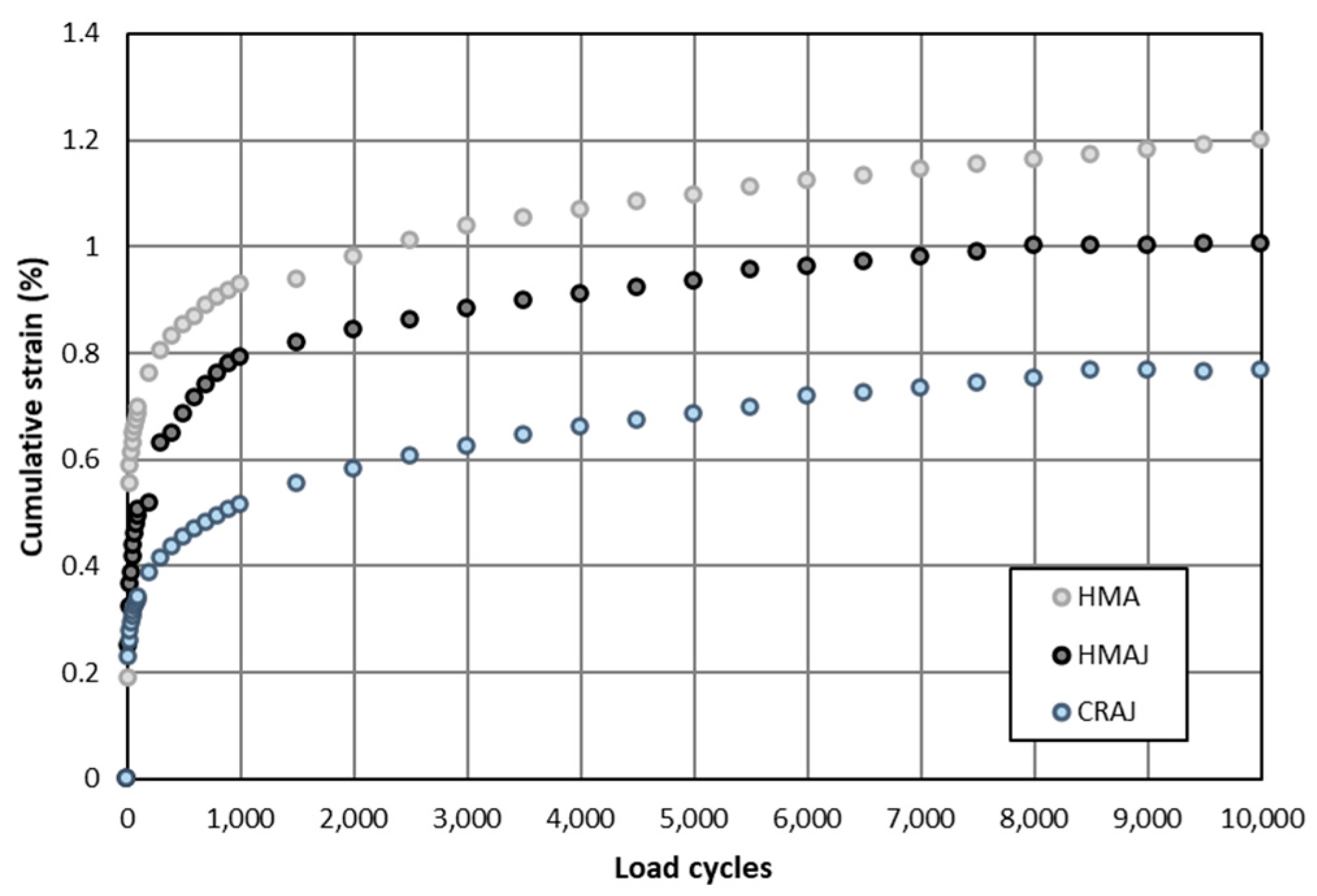
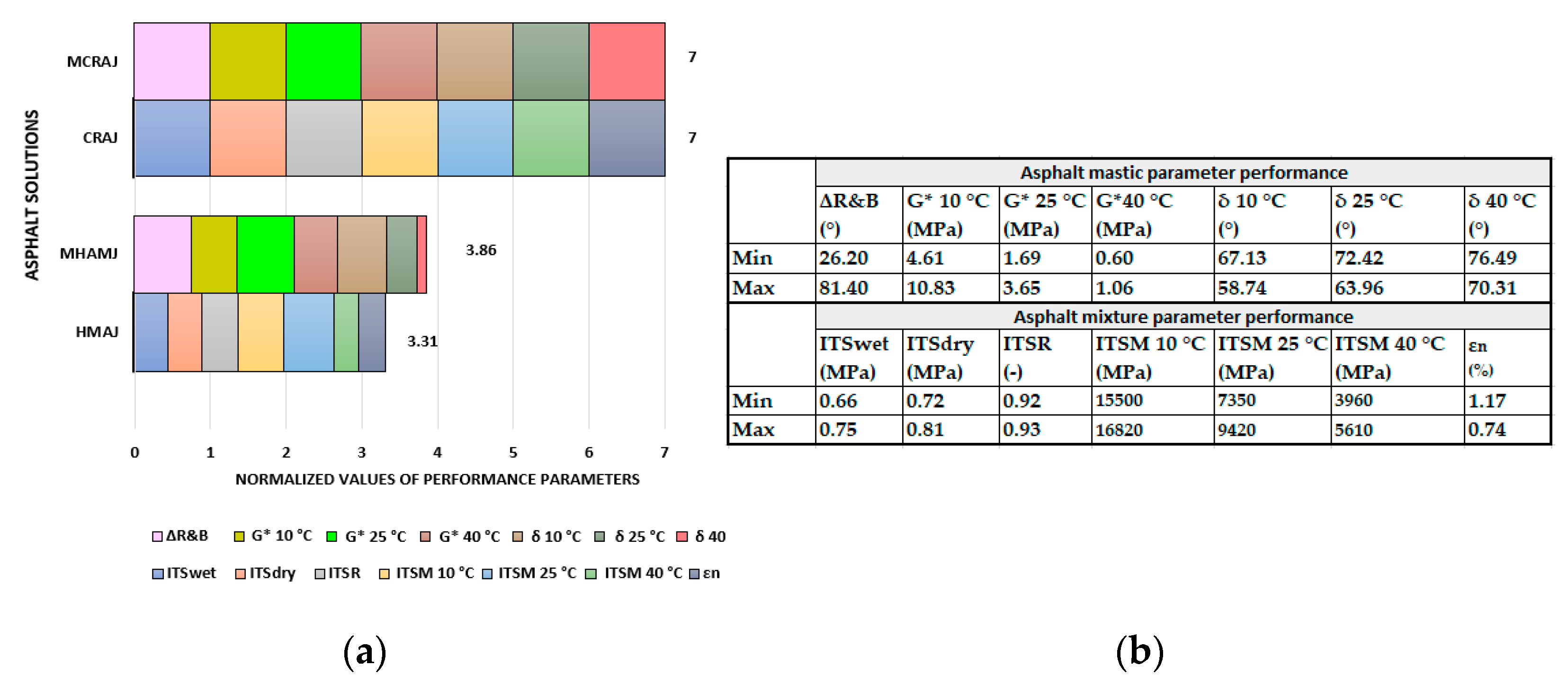
| Aggregate Size | Density | Los Angeles | Shape Index | Flattening Index | Equivalent Sand | Rigden Voids |
|---|---|---|---|---|---|---|
| (g/cm3) | (%) | (%) | (%) | (%) | (%) | |
| EN 1097-6 | EN 1097-2 | EN 933-4 | EN 933-3 | EN 933-8 | EN 1097-4 | |
| Coarse Aggregates | ||||||
| 31.5–16 mm | 2.68 | – | 4 | 16 | – | – |
| 10–16 mm | 2.69 | 16 | 4 | 8 | – | – |
| 6–12 mm | 2.71 | 16.4 | 8 | 11 | – | – |
| Fine Aggregates | ||||||
| Sand | 2.71 | – | – | – | 80 | – |
| Filler | 2.73 | – | – | – | – | 46 |
| Parameters | Unit | Value | Standard |
|---|---|---|---|
| Size designation | – | 20 RA 0/16 | EN 13108-8 |
| Foreign matter content | % | 1.5 | EN 12697-42 |
| Bulk density | g/cm3 | 2.52 | EN 1097-6 |
| Water absorption | % | 1.6 | EN 1097-6 |
| Sand equivalent | % | 71 | EN 933-8 |
| Flakiness index | % | 10 | EN 933-3 |
| Parameter | Concentration in mg/kg | |
|---|---|---|
| JGW | RAP | |
| Antimony | 0.2 | 0.7 |
| Arsenic | 15.2 | 0.6 |
| Beryllium | – | 1.4 |
| Cadmium | 0.11 | 8.5 |
| Calcium | 70,350 | – |
| Cobalt | 10.5 | 14.1 |
| Chromium (total) | 21.1 | 36.4 |
| Iron | 13300 | 185 |
| Magnesium | 4750 | – |
| Manganese | 4.5 | – |
| Nickel | 11.5 | 25.1 |
| Lead | 0.8 | 4.5 |
| Silicon | 185,150 | – |
| Copper (total) | 19.5 | 11.6 |
| Tin | 4.4 | 2.8 |
| Vanadium | 4.59 | 3.1 |
| Zinc | 70.5 | 15.7 |
| Parameters | Unit | Value | Standard |
|---|---|---|---|
| Bitumen | |||
| Penetration @ 25 °C | dmm | 68 | EN 1426 |
| Softening point | °C | 48.8 | EN 1427 |
| Dynamic viscosity @ 150 °C | Pa s | 0.25 | EN 13702 |
| Bituminous Emulsion | |||
| Water content | % | 40 | EN 1428 |
| pH value | – | 4.2 | EN 12850 |
| Settling tendency at 7 days | % | 5.8 | EN 12847 |
| Cement | |||
| Initial setting time | min | 112 | EN 196-3 |
| Compressive strength at 2 days | MPa | 27.8 | EN 196-1 |
| Compressive strength at 28 days | 61.2 | ||
| Volume constancy | mm | 0.52 | EN 196-3 |
| Components | Unit | Asphalt Mixtures | ||
|---|---|---|---|---|
| HMA | HMAJ | CRAJ | ||
| Grading Composition | ||||
| Limestone 31.5–10 mm | % | 9 | 9 | 11 |
| Limestone 6–12 mm | % | 32 | 32 | 7 |
| Limestone 3–6 mm | % | 31 | 31 | – |
| Limestone sand | % | 24 | 24 | 2 |
| Limestone filler | % | 4 | – | – |
| JGW filler | % | – | 4 | 4 |
| RAP | % | – | – | 76 |
| Binders by Total Weight of the Aggregates | ||||
| Bitumen | % | 3.8 | 4.30 | – |
| Bitumen emulsion | % | – | – | 5 |
| Cement | % | – | – | 0.5 |
| Water | % | – | – | 5 |
| Mastic | ||||
| f/b ratio | – | 1.05 | 0.93 | 1.14 |
| Volumetric Properties | ||||
| Bulk density | g/cm3 | 2.52 | 2.51 | 2.52 |
| Air void content | % | 4 | 4 | 9 |
| Test Parameters | Unit | Value |
|---|---|---|
| Loading pulse rise-time (see “c” in Figure 12) | ms | 120 |
| Rest period (see “d” in Figure 12) | ms | 3000 |
| Pulse repetition period | ms | 3000 |
| N° conditioning pulses | – | 10 |
| Target temperature | °C | 10 |
| Estimated Poisson’s ratio | – | 0.35 |
| Target horizontal deformation | μs | 47 |
| Asphalt Mixtures | ITSM at 10 °C (MPa) | Δ (%) | ITSM at 25 °C (MPa) | Δ (%) | ITSM at 40 °C (MPa) | Δ (%) |
|---|---|---|---|---|---|---|
| HMA | 15,500 | – | 7350 | – | 3960 | – |
| HMAJ | 16,300 | 5 | 8730 | 18.7 | 4500 | 13.6 |
| CRAJ | 16,820 | 8.5 | 9420 | 28 | 5610 | 41.6 |
Publisher’s Note: MDPI stays neutral with regard to jurisdictional claims in published maps and institutional affiliations. |
© 2021 by the authors. Licensee MDPI, Basel, Switzerland. This article is an open access article distributed under the terms and conditions of the Creative Commons Attribution (CC BY) license (https://creativecommons.org/licenses/by/4.0/).
Share and Cite
Russo, F.; Veropalumbo, R.; Biancardo, S.A.; Oreto, C.; Scherillo, F.; Viscione, N. Reusing Jet Grouting Waste as Filler for Road Asphalt Mixtures of Base Layers. Materials 2021, 14, 3200. https://doi.org/10.3390/ma14123200
Russo F, Veropalumbo R, Biancardo SA, Oreto C, Scherillo F, Viscione N. Reusing Jet Grouting Waste as Filler for Road Asphalt Mixtures of Base Layers. Materials. 2021; 14(12):3200. https://doi.org/10.3390/ma14123200
Chicago/Turabian StyleRusso, Francesca, Rosa Veropalumbo, Salvatore Antonio Biancardo, Cristina Oreto, Fabio Scherillo, and Nunzio Viscione. 2021. "Reusing Jet Grouting Waste as Filler for Road Asphalt Mixtures of Base Layers" Materials 14, no. 12: 3200. https://doi.org/10.3390/ma14123200
APA StyleRusso, F., Veropalumbo, R., Biancardo, S. A., Oreto, C., Scherillo, F., & Viscione, N. (2021). Reusing Jet Grouting Waste as Filler for Road Asphalt Mixtures of Base Layers. Materials, 14(12), 3200. https://doi.org/10.3390/ma14123200











